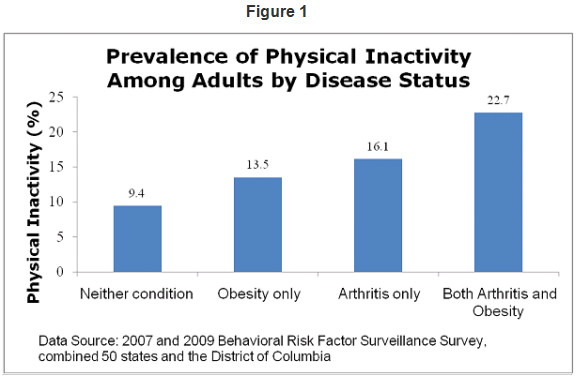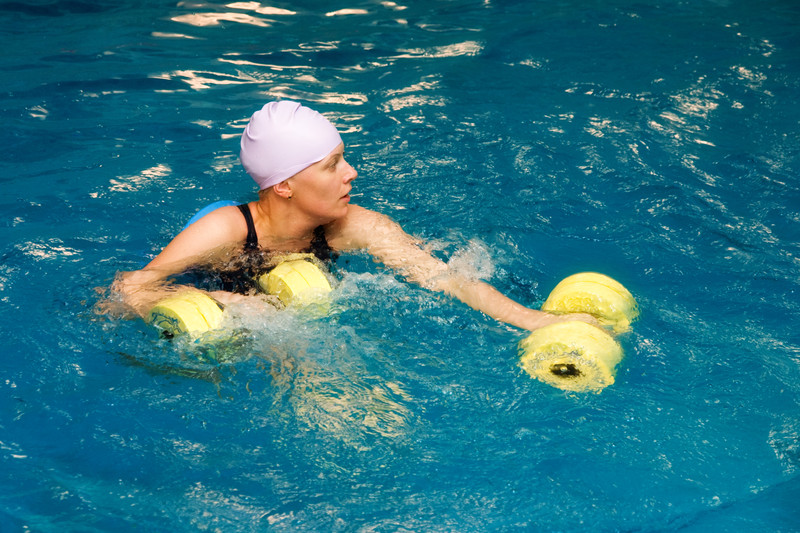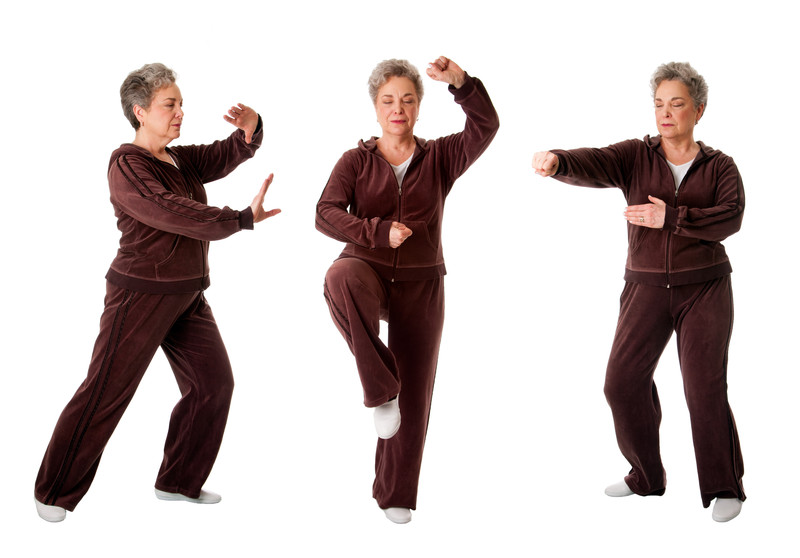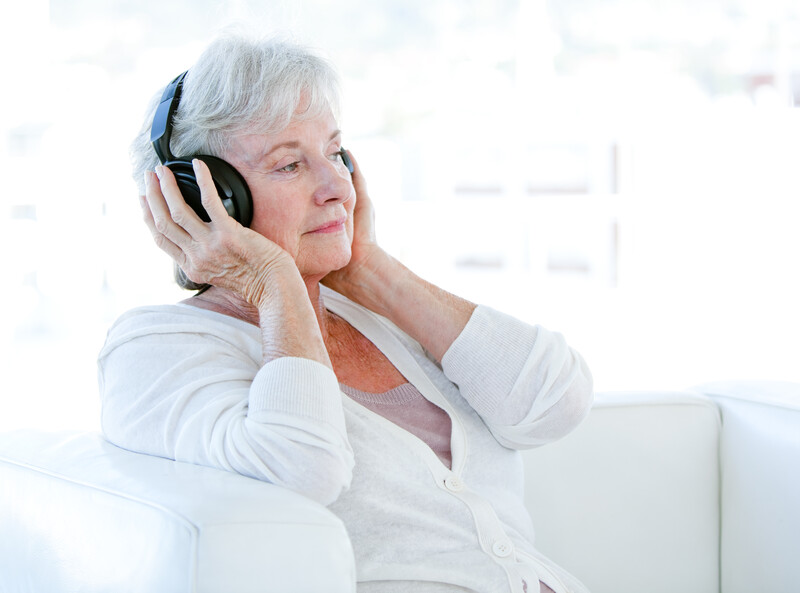
If you feel like you are not getting enough physical activity you are not alone. The President’s Council on Fitness, Sports & Nutrition, reports that less than 5 percent of adults participate in 30 minutes of physical activity each day, and only one out of every three adults gets the recommended amount of exercise per week (1). This is likely even more problematic when it comes to those who are suffering from chronic pain.

When people are suffering from chronic pain, no matter what the source may be, they often shy away from daily exercise. I have met many people who feel this way, but I always remind them that it is important to change the way we think so we can move forward with our pain-management strategy. I have helped many people with physical activity treatments that enable them to manage their pain, become more tolerant, and even reduce the amount of pain medication they need. It is important for those who are seeking pain relief to grasp the idea of the mind-body concept and begin to see the connection to how what we think impacts what we feel.
The good news that I like to share with patients who have chronic pain is that there are exercises you can do to help reduce the pain. It may seem difficult to believe at first, especially if you feel more pain as you move, but it has helped many people, and I’m confident it can help you, too. One young woman, who has Crohn’s Disease, shared her experience with how exercise helps her. While she says there are days her stomach is in pain, making her dread exercise, she pushes herself to do it, knowing that by the time she is done, she actually feels better. It took her pushing past the pain and exercising several times before she realized that every time she started out with her stomach in pain, when she finished exercising she felt better all around. While some people feel the results immediately, others may find that they feel them over time.
Pain and Mobility Connection
There is a toll that pain takes on the body and over time can cause damage. According to the American Psychological Association, when the body is stressed it tenses up. Chronic stress, which is ongoing, causes the body to be in a constant tense state, which leads to other problems in the body, such as pain (2). This often starts a cycle involving the person who is experiencing chronic pain to avoid physical exercise, which leads to muscle atrophy and a decline in their overall health, eventually leading to stress-related musculoskeletal conditions (3).
Sedentary lifestyles tend to increase pain, while physically active ones tend to reduce stress and pain. The Centers for Disease Control and Prevention (CDC) reports that physical activity can improve health, and those who are physically active live longer, as well as have a lower risk of such diseases as type 2 diabetes, heart disease, stroke, some cancers, and depression (4). In other words, there are a lot of good reasons to get moving and be active, and none for living a sedentary lifestyle. The good news is that regular physical activity works against pain, as well as against the health risks that come with being sedentary.
Benefits of Exercise
In addition to the health benefits and lower disease risks that are associated with regular physical activity, there are additional reasons to get active. An August 2014 study in the journal Medicine and Science in Sports and Exercise, reported that moderate to vigorous-intensity aerobic exercise increases pain tolerance in healthy individuals (5). In another study in the March 2015 issue of Pain Medicine, researchers found that aerobic exercise helped to reduce the pain in those with diabetic neuropathy, and significant reductions even occurred with walking (6). Further, the CDC reports that regular physical activity helps to keep your mind sharp, reduce risks of depression, improve sleep, and provide mental health benefits (7).
As you can see, being physically active on a regular basis helps with improving the mind and the body. When that happens, you are better able to tolerate pain, as well as work toward more effective pain management.
Types of Exercise
While there is a lot of evidence to support the fact that being physically active is a good thing for the body, not all types of exercises are ideal for those who suffer from chronic pain. The goal is to get some exercise, but to keep it more or less low impact so that you gain some benefits, but you are not adding to the stress the body is feeling. Over time, when you stick with exercising regularly, you can always bump it up and go for something a little more vigorous if you feel you are ready for that. But ideally, it’s best to start out with something that is lower impact, but that will be beneficial.
There are three main types of physical activity that I routinely recommend to people who come to me suffering from chronic pain. I’ve seen the positive impact they can have on one’s life. While you don’t need to try to all three of them, pick one or two to start out with to get yourself started in regularly exercising.
Here are the three main types of exercise I recommend for those with chronic pain, and the science supporting them:
- Tai chi. According to the National Institutes of Health (NIH), tai chi is a form of martial arts that originated in China. It’s considered to be a gentle form of moving meditation, where the person makes slow movements, is aware and focused, and is practicing deep breathing. There are many reasons people engage in regular tai chi, including an overall sense of well being, stress reduction, sleep improvements, improvement in physical condition, improve balance, strengthen muscles, and ease pain and stiffness in the body (8). Additionally, the NIH reports that tai chi may be beneficial to those with fibromyalgia, citing that findings from research analyzed support tai chi for musculoskeletal pain, depression, and helping with overall quality of life (9). Further research in the Journal of Rheumatology, reports that older women in a 12-week study were able to perform tai chi exercises and it was effective in helping to improve their arthritis symptoms, balance, and physical functioning (10). Tai chi is such a low impact physical activity that just about anyone can immediately get started doing it. The exercise is offered through many YMCA locations, community exercise programs, senior centers, and by independent businesses, such as martial arts centers. Don’t let the fact that it is a form of martial arts scare you away. It’s not the jumping, kicking, and rolling that you may conjure up in your mind when you think of martial arts. It’s just the opposite, as it will have you making slow, purposeful movements through the whole class. Tai chi has been around for thousands of years, providing benefits to those who engage in it, regardless of age, and all around the world. Once you try this practice you may just wonder why it took you so long to discover it, because many people who try it are hooked and make it a regular part of their life.
- The NIH reports that yoga is a mind and body practice that has its roots in ancient India. It’s another form of mindful exercise that involves meditative movements, including postures, breathing techniques, and relaxation or meditation (11). They also report that for those who suffer from chronic low-back pain, yoga may help reduce the pain and improve function, if the exercises are carefully adapted (12). The important thing to keep in mind when it comes to engaging in yoga to help with the chronic pain, is that you need to adapt it to you and your condition. Not all yoga poses are going to be practical and recommended for someone who has chronic pain. You need to carefully tailor the poses to fit your condition. You may find that chair yoga suits you best. Adapt the yoga to fit you, so that you can get the most out of it, and gain the benefits that it can provide. Yoga can also help to reduce heart rate and blood pressure, as well as relieve anxiety and depression (13). When practiced appropriately, yoga is a low impact exercise and can easily be adapted to each person’s ability. Yoga is offered at many businesses around the country, as well as gyms, senior centers, and city programs.
- Swimming or water exercise. Also referred to as aquatherapy, this is exercise that is done in the water, including swimming or water aerobics. There are many health clubs, community pools, and senior centers that offer this type of exercise program. In the April 2014 issue of Clinical Rehabilitation, researchers reported that those who had low back pain that participated in a two-month (five times per week) program had significantly reduced low back pain. They report that continued aquatherapy decreases levels of back pain and disability, increases quality of life, and improves body composition in those suffering from chronic low back pain (14). In another study in the Archives of Physical Medicine and Rehabilitation, researchers found that aquatherapy improved posture stability in those who suffered from Parkinson’s Disease (15). Most people are comfortable in water that is 86 degrees or warmer, but for some, even cold water swimming may be beneficial. A May 2014 issue of the North American Journal of Medical Sciences reported that regular winter swimming significantly decreases tension and fatigue, while it also increased vigor, and decreased pain in for those who suffered from rheumatism, fibromyalgia, asthma. They report that it also improved overall general well-being (16).
While tai chi, yoga, adapted to your personal abilities, and aquatherapy are the top choices I recommend, there are several other forms of exercise that are runners-up. The first is pilates, which is a practice that uses “mind over matter” to achieve balance, strength, and health, according to a study published in Sports Health. It emphasizes rhythmic breathing, mental focus, motor learning, individualized practice, and total core control. Researchers report that regular practice of pilates should lead to relaxation, control of the mind, improved core stability, and decreased stress, among other benefits (17).
Another runner-up is simply engaging in a regular walking program for exercise. Walking is an activity that most people can do, it can be done just about anywhere, and it provides a range of benefits. The National Institute of Diabetes and Digestive and Kidney Disorders reports that walking can help lower risks associated with such things as high blood pressure, heart disease, and diabetes, it can strengthen your bones and muscles, and it can help to improve your mood (18). Walking is a low impact activity that you can walk out your front door to do. Join a local walking club in your community, or check with a mall in your area to see if they have a mall walkers program. Many malls offer a walking program, providing walkers with a safe indoor option for walking where you will be with others in the program and will not have to worry about the elements as the seasons change.

Sticking it Out
Once you have decided what type of exercise or exercises you want to try and make a part of your life, you then have to think about such things as how often you should exercise, and sticking with it for the long term. The amount exercise that the CDC recommends for adults is 150 minutes per week of moderate intensity exercise (19), but these guidelines are not going to fit into a plan that includes things like tai chi and yoga. Ideally, try to engage in these exercises at least three times per week for at least 30 minutes per session—but depending on your condition, you may have to start with much less, and gradually work up your times.
Not all exercise has to be done in one lengthy chunk. You don’t have to spend an hour straight exercising to gain benefits. There are benefits to doing even 10 minutes of exercise at a time. Even when you break up the activity, it will add up over the course of the week, and provide the benefits (20). It’s important to stick with the exercises and have patience. Most people do not see improvements overnight. By sticking with it and being patient you are more likely to see the results over time. Especially in the beginning you may feel that it’s too difficult or that it’s challenging to make yourself stick with a routine that includes exercising. But with repeated exposure you can help turn your exercise into a habit. Getting started is often the most difficult part, but once you stick with it, exercise often becomes easier for people as they continue doing it regularly.
Make a plan that will help you stick with doing the exercises. If you have a plan in place you will be more likely to stick with it and keep at it. Some of the things you can do that will help you stick with it include:
- Scheduling it on your calendar. If you keep a calendar of everything you have to do, make exercise one of those things on the list. This will help keep it fresh in your mind and you can plan other things around it.
- Find a buddy to do this with, where you both can help keep each other accountable. If you don’t have one person that you can do this with, find a class in your area. Many people find it motivating to attend an exercise class where there are others. People get to know each other and you will feel motivated by others being there, providing feedback, and helping you to feel a part of a group. If you can’t find a group in your area, consider starting one. Chances are, there are others in the area who would be interested, too.
- Keep an exercise journal where you log everything you do, how long you do it for, and how you feel after doing it. Over the weeks that follow you can monitor your progress. As you log the improvements you will be motivated to continue on. Plus, it’s one more way to continue holding yourself accountable to keep going.
- Consider rewarding yourself with a non-food reward for sticking with it. For example, make a deal with yourself from the start that if you engage in the regular exercise for a period of a month or two, that you will reward yourself by getting a pedicure, buying a shirt or book, or something you have been wanting.
- Remind yourself daily or weekly why it is that you are engaging in the exercise. Remind yourself of the benefits for helping to reduce the chronic pain, as well as the host of other health benefits that come along with it.
The more you can get involved with others when it comes to getting regular exercise and being held accountable, the better off you will likely be. Joining a support group, fitness group, or finding others to share your experience with provides a great way to help keep you on track, keep you motivated to continue, and it helps make it fun. The last thing that anyone wants is for exercise to feel like its work or punishment of some sort. The more you have fun doing it, the more likely you are going to want to keep at it. Find which of these exercises you enjoy, and then stick with it. Doing the exercises with a friend or in a class may also help make it more fun. People like to continue doing things that are fun, so do the exercise that you feel is fun.
Finding a Teacher
Each of these exercise programs involves a teacher or instructor if you are going to do it in a class or even through individual instruction. This is a good idea, even if you only involve the instructor from the start, so they can show you the proper and safe ways to engage in these exercises. Not all instructors have to be certified to teach these exercises. The certification process varies by exercise and there are no set standards across the country. Therefore it’s a good idea to take the time to seek out a qualified instructor.
To get started finding an instructor ask around to see who others use and recommend. If you don’t know anyone that teaches these exercises, ask your doctor for a referral, contact your local YMCA, or contact your local council on aging. Any of these types of places can get you started in the right direction. Then you can check out the individual instructor to see what their qualifications are, and possibly try a class for free before signing up. At a minimum, those teaching these classes should be well experienced and if certification is available, that they are certified in that particular area.

Consistency is Key
When it comes to long term success with just about anything in life, it usually involves small efforts made over time. Those small efforts add up to bring you success or benefits. The same goes with adding these exercises to your life to help reduce chronic pain. Being consistent in doing them, having a good mindset and believing they will help you, and doing them long term will provide you with the best return. Even if you are still skeptical after learning the benefits and science that backs engaging in these exercises, you have nothing to lose by trying it out. Make a goal to do it for one or two months consistently and see how you honestly feel after that time. My guess is that you, like many other patients I have worked with, will find that you enjoy the benefits they provide. And that alone is worth putting in the effort to make them a regular part of your life!
Sources:
- President’s Council on Fitness, Sports & Nutrition. Facts & Statistics. <http://www.fitness.gov/resource-center/facts-and-statistics/>
- American Psychological Association. Stress effects on the body. <http://www.apa.org/helpcenter/stress-body.aspx>
- American Psychological Association. Stress effects on the body. <http://www.apa.org/helpcenter/stress-body.aspx>
- Centers for Disease Control and Prevention. Physical Activity. <http://www.cdc.gov/healthyplaces/healthtopics/physactivity.htm>
- Medicine and Science in Sports and Exercise. 2014 Aug;46(8):1640-7. doi: 10.1249/MSS.0000000000000273.
- Pain Med.2015 Mar 20. doi: 10.1111/pme.12743.
- Centers for Disease Control and Prevention. Physical Activity and Health. <http://www.cdc.gov/physicalactivity/basics/pa-health/index.htm#ImproveMentalHealth>
- National Institutes of Health. Tai Chi: An Introduction. <https://nccih.nih.gov/health/taichi/introduction.htm>
- National Institutes of Health. Tai Chi May Benefit Patients with Fibromyalgia. <https://nccih.nih.gov/research/results/spotlight/081810.htm>
- Journal of Rheumatology.2003 Sep;30(9):2039-44.
- National Institutes of Health. Yoga for Health. <https://nccih.nih.gov/health/yoga/introduction.htm>
- National Institutes of Health. Yoga for Health. <https://nccih.nih.gov/health/yoga/introduction.htm>
- National Institutes of Health. Yoga for Health. <https://nccih.nih.gov/health/yoga/introduction.htm>
- Clinical Rehabilitation. 2014 Apr;28(4):350-60. doi: 10.1177/0269215513504943. Epub 2013 Oct 31.
- Archives of Physical and Medical Rehabilitation. 2011 Aug;92(8):1202-10. doi: 10.1016/j.apmr.2011.03.017.
- North American Journal of Medical Sciences. 2014 May; 6(5): 199–209.
- Sports Health. 2011 Jul; 3(4): 352–361.
- National Institute of Diabetes and Digestive and Kidney Disorders. Walking, a step in the right direction. < National Institute of Diabetes and Digestive and Kidney Disorders>
- Centers for Disease Control and Prevention. How much physical activity do adults need? <http://www.cdc.gov/physicalactivity/basics/adults/index.htm>
- Centers for Disease Control and Prevention. How much physical activity do adults need? <http://www.cdc.gov/physicalactivity/basics/adults/index.htm>







